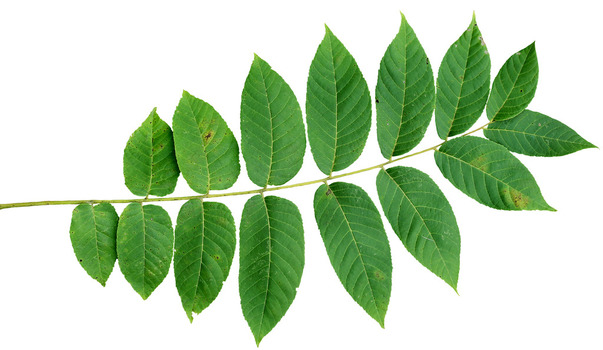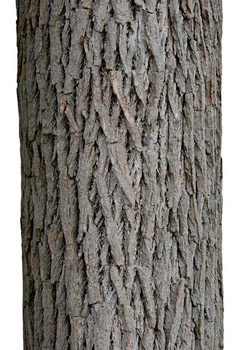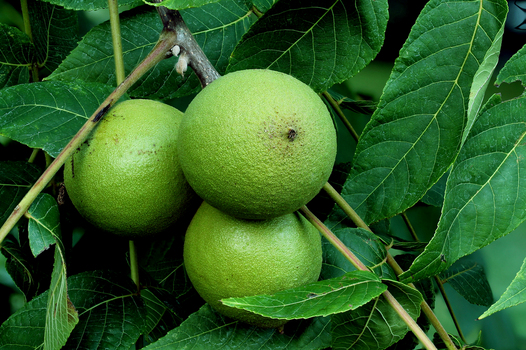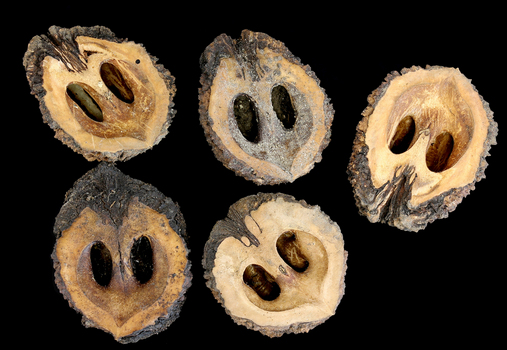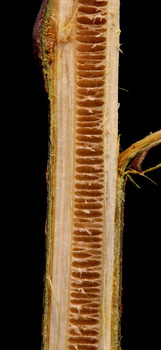Black Walnut
Classification:
Family: Juglandaceae, walnut family
Genus, species: Juglans nigra
Leaves:
Leaves are pinnately compound, with a more feathery appearance compared to White Ash leaves. Each leaf has 14 to 24 leaflets. Largest leaflets are located in the center of the leaf. Leaflets are lance-shaped with finely saw-toothed edges.
Bark:
Bark is dark gray or brown, deeply furrowed.
Flowers:
Male and female flowers are separate but in same tree (monoecious), clustered in catkins.
Fruit:
Fruit is very hard, covered by thick green husk. Husk produces a dark-staining, strong-smelling juice. Husk has been used to make a black dye since colonial times. Nuts are edible. Before eating or storage, nuts should be cured in a dry place for at least two weeks.
Twigs:
Interior of twig has a chambered pith.
Roots:
Black walnut produces juglone and releases it through its roots. Juglone is a chemical that is toxic (allelopathic) to some nearby competitor plants.
More Information:
The genus name Juglans is from the Latin for "walnut" and the species name nigra is from the Latin for "black."
Photos:
